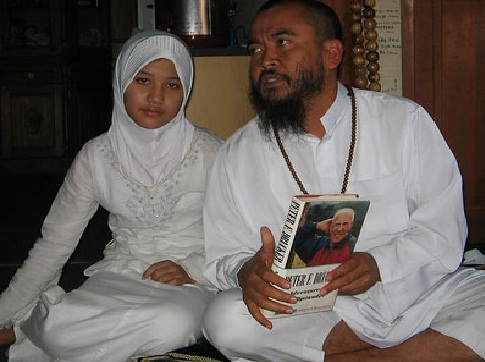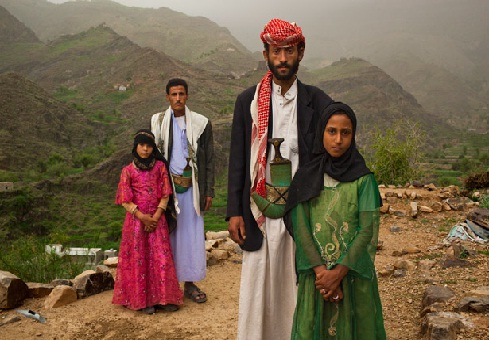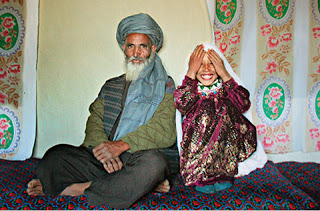
எல்லா மதங்களையும் போலவே இஸ்லாமும் ஆணாதிக்க மதமே. அதன் விதிமுறைகளும், சட்ட திட்டங்களும் அதை தக்கவைக்கும் விதத்திலேயே வடிவமைக்கப் பட்டிருக்கின்றன. பெண்களை கண்ணியப்படுத்துவதாக கூறப்படும், இஸ்லாமிய ஆணாதிக்கத்தின் குறியீடாக இருக்கும் புர்கா கலாச்சாரத்தை கொண்டே இதை பார்க்கலாம்.
புர்கா, பர்தா, துப்பட்டி, ஹிஜாப் என்று பலவிதங்களில் அழைக்கப்படும் பெண்களுக்கான மேலதிக ஆடை தமிழ்ச் சூழலில் 80களுக்கு முன்பு வெகு சில ஊர்களில் மட்டும் மரபாக இருந்தது. கடுங்கோட்பாட்டுவாத இயக்கங்கள் செயல்படத் தொடங்கியதன் பின்னர் தற்போது அனைத்து இடங்களிலும் இந்த ஆடைமுறை இஸ்லாமியப் பெண்களின் மீது ஒரு உறுப்பாகவே படிந்து விட்டது. எந்த அளவுக்கு இந்த ஆடை பெண்களுக்கான கண்ணியமாக இஸ்லாமியர்களால் திணிக்கப்படுகிறதோ அந்த அளவுக்கு விமர்சனத்திற்கும் உள்ளாகியிருக்கிறது. இதை இஸ்லாமியர்கள் இரண்டு விதங்களில் எதிர்கொள்கிறார்கள். ஒன்று. புர்காவை மறுப்பவர்கள், மேற்குலகின் ஆகக் குறைந்த ஆடை அணிவதையே சுதந்திரமாக கொண்டிருக்கும் போக்கிற்கு ஆதரவாக இருக்கிறார்கள் என்பது. இரண்டு, புர்காவை மறுப்பவர்கள், பெண்களுக்கு வேறு என்ன அளவில் ஆடை அணிய வேண்டும் என்பதை வரையறுத்திருக்கிறார்களா? என்பது.
பெண்களுக்கான இந்த மேலதிக ஆடைய அணியச் செய்வதற்கு கூறப்படும் காரணம், ஆண்களின் காமப் பார்வையிலிருந்து பெண்களை காக்கும் என்பது தான். பெண்ணுக்கு எதிரான பாலியல் மீறல் என்பது ஆணின் குற்றம். ஆண் செய்யும் இந்த குற்றம் நிகழாமல் இருக்க வேண்டுமென்றால் பெண் மேலதிக கருவிகளுடன் தன்னை பாதுகாத்துக் கொள்ள வேண்டும் என்பது சாரம்சத்தில் பெண்ணை சக மனிதப் பிறவியாக எண்ணாததன் வெளிப்பாடு தான். எவ்வாறெனின், குற்றத்தால் பாதிக்கப்படுபவர்களிடமே அதிலிருந்து பாதுகாத்துக் கொள்ளும் பொறுப்பையும் வழங்கியிருக்கிறது. உடலுறுப்புகள் வெளித்தெரியும்படி ஆடையணிவது ஒரு ஆணை பாலியல் குற்றத்திற்கு தூண்டும் எனக் கூறி குற்றத்தின் பங்களிப்பை பாதிக்கப்படும் பெண்களிடமும் பகிர்வது.
பொதுவாக பாலியல் உறவு என்பது இருபாலாரும் விரும்பி ஈடுபடுவது. மனைவியாயியினும், வேறு பெண்களாயினும்; முழுவதுமாக மறைத்துக் கொண்டிருந்தாலும், நிர்வாணமாக இருந்தாலும் அவளை வற்புறுத்துவது ஆணுக்கு உரிமையல்ல. ஒரு ஆண் மேலாடையின்றி இருந்தான் என்பதால் அவன் முதுகில் சுவரொட்டியை ஒட்டிவிட்டு; சுவரொட்டி ஒட்டப்படாமல் இருக்க வேண்டுமென்றால் நீ முதுகை மறைத்திருப்பது உன்னுடைய கடமை என்றால், அது எவ்வளவு அபத்தமாக இருக்குமோ, அவ்வளவு அபத்தம் பெண் பாலியல் வல்லுறவு செய்யப்படாமலிருக்க வேண்டுமென்றால் அவர்கள் தங்களை கவசமிட்டு மறைத்துக் கொள்ள வேண்டுமென்பது.
பணமோ, பொருளோ திருடப்படாமல் தடுக்க வேண்டுமென்றால் அதை பெட்டியில் பூட்டிவைத்து பாதுகாக்க வேண்டும் என்பதைப் போல் பெண்களையும் பார்த்தால்; பணத்தின், பொருளின் மதிப்பு அதன் பரிமாற்ற பயன்பாட்டில் இருப்பதைப் போல் பெண்களின் மதிப்பு அவர்களின் பாலியல் பயன்பாட்டில் இருக்கிறது என்பதை ஒப்புக் கொண்டவர்களாவார்கள். பெண்கள் சக பிறவிகள் இல்லை, பாலியல் பண்டம் தான் எனக் கூறுவதற்கு ஆண்களுக்கு மட்டுமல்ல, கடவுளோ, மதமோ, வேதமோ எதற்கும் உரிமையில்லை.
இஸ்லாம் ஆண்களுக்கு ஆடைவரம்பு விதித்திருப்பதைப் போல், பெண்களுக்கும் விதித்திருக்கிறது இதில் அடிமைத்தனம் ஒன்றுமில்லை என்பது முஸ்லீம்களின் பிரபலமான வாதம். இது உண்மையா? குரான் 24:30,31 இப்படி குறிப்பிடுகிறது.
மூமீன்களான ஆடவர்களுக்கு நீர் கூறுவீராக, அவர்கள் தங்கள் பார்வைகளைத் தாழ்த்திக் கொள்ள வேண்டும். வெட்கத் தலங்களை பேணிக் காத்துக் கொள்ள வேண்டும்….. இன்னும் மூமீன்களான பெண்களுக்கும் நீர் கூறுவீராக அவர்கள் தங்கள் பார்வைகளைத் தாழ்த்திக் கொள்ள வேண்டும். வெட்கத் தலங்களை பேணிக் காத்துக் கொள்ள வேண்டும். தங்கள் அழகலங்காரத்தை அதினின்று தெரியக் கூடியதைத் தவிர வெளிக் காட்டலாகது. இன்னும் தங்கள் முன்றானைகளால் மார்புகளை மறைத்துக் கொள்ள வேண்டும். மேலும் தம் கணவர்கள், தம் தந்தையர்கள், தம் கணவர்களின் தந்தையர்கள், தம் புதல்வர்கள், தம் கணவர்களின் புதல்வர்கள், தம் சகோதரர்கள், தம் சகோதரர்களின் புதல்வர்கள், தம் சகோதரிகளின் புதல்வர்கள், தங்கள் பெண்கள், தம் வலக்கரங்கள் சொந்தமாக்கிக் கொண்டவர்கள், ஆடவர்களில் தம்மை அண்டி வாழும் பெண்களின் மறைவான அங்கங்களைப் பற்றி அறிந்து கொள்ளாத சிறுவர்கள் ஆகிய இவர்களைத் தவிர தங்கள் அழகலங்காரத்தை வெளிப்படுத்தக் கூடாது……
இந்த வசனங்கள் தெளிவாகக் கூறுகின்றன, முஸ்லீம்கள் கூறுவது போல் ஆண்களுக்கான ஆடை பெண்களுக்கான ஆடை என்று வரையரை செய்வதாக இல்லாமல் அவர்கள் அணிந்திருக்கும் ஆடைகளுடன் குறிப்பிட்ட சில ஆண்களை தவிர ஏனைய ஆண்களுக்கு முன் வரக்கூடாது என்பதையே அந்த வசனம் குறிக்கிறது. அதாவது, அவர்கள் தங்கள் உடலுறுப்புகளை மறைத்து என்ன ஆடை உடுத்தியிருந்தாலும் அந்த ஆடை அலங்காரங்களுடன் அவற்றை மறைத்துக் கொண்டே வெளிப்பட வேண்டும். இது ஆடை சார்ந்த விசயமா? அடிமைத்தனம் சார்ந்த விசயமா?
தற்போதைய நிலைமைகளுக்கு ஏற்ப, உடலை முழுவதும் மறைக்கக் கூடிய சுடிதார் போன்ற ஆடைகளும் ஹிஜாப் போன்றது தான் என்று முஸ்லீம்கள் வைக்கும் வாதத்தையும் மேற்கண்ட வசனம் தகர்த்து விடுகிறது. ஆக உடலை முழுவதும் மறைக்கக் கூடிய எந்த ஆடையாக இருந்தாலும் அது அலங்காரமாகவும் இருப்பதால் அதை மறைக்கும் படியாக மேலதிக ஆடையுடன் தான் பொது இடங்களுக்கோ, அன்னியர்களுக்கு முன்போ வரவேண்டும் என்பது தான் பெண்களுக்கு விதிக்கப்பட்டிருக்கும் கட்டுப்பாடு. இது ஆண்களுக்கு இல்லை.
முகத்தையும் முன்கைகளையும் தவிர ஏனைய பகுதிகளை மறைத்துக் கொள்ளுங்கள் எனும் ஹதீஸை பெண்களின் ஆடைகளுக்கான வரம்பாக காட்டினாலும், முகத்தையும் மறைத்துக் கொள்ள வேண்டும் என்பதையும் குரான் வசனங்கள், ஹதீஸ்கள் வலியுறுத்துகின்றன.
நபியே நீர் உம் மனைவிகளுக்கும்,உம் பெண் மக்களுக்கும், ஈமான் கொண்டவர்களின் பெண்களுக்கும் அவர்கள் தங்கள் தலை முன்றானைகளை தாழ்த்திக் கொள்ளுமாறு கூறுவீராக…….. குரான் 33:59
















ஹிஜாபின் கதையை குரான் மற்றும் ஹதீதின் ஒளியில் நாம் அறிய வேண்டாமா ?
முகம்மதுவின் மனைவிமார்கள் ( கிட்டத்தட்ட 13 ) கழிவு வெளியேற்ற அல்-மனாசி அப்டின்னு ஒரு திறந்த வெளி புல்வெளி கழகத்துக்கு போறது வழக்கம். கூட்டமா கக்கூஸ் போறதை உமர் தினமும் நோட் பண்ணுவாராம். ( நடந்து போறதா மட்டும்னு நான் நினைக்கிறேன் )
அப்படி நோட் பண்ணி ஒருநாள் சவுதா ( மூமீன்களின் தாய்) போகும் பொது இந்த உமர் அத பாதுட்டாறாம்.
உடனே அத நபிகிட்ட போட்டு குடுத்த உடனே அல்லா கிட்ட இருந்து “வஹீ” வந்துருச்சாம்.
அதுக்கு நபி, உமர் நாக்குல அல்லா இருக்குறான்னு வேற பாராட்டாம். ( அல்லா எங்கே என்று கேட்கும் நாத்திகர்களுக்கு பதில் கிடைத்து விட்டது !! சுபஹானல்லாஹ் ) .
கேள்விகள் :
****************
1 . மூமீன்களின் தாய்கள் கக்கூசு போகும் போது அவுகள நோட் பண்றது தான் உமரின் வேலையா ?
2 . அல்லாஹ்வின் இருப்பிடம் உமரின் ஊத்த வாயா ?
3 .சவுதாவுக்கு அன்று கக்கூசு வரலேன்ன முஸ்லிம் பெண்கள் ஹிஜாப் போட வேண்டிய அவசியமிருக்காதா?
4 . உமர் சொல்லித்தான் அல்லாஹ்வுக்கு ஹிஜாப் பற்றி அறிவு வந்ததா ?
This is one of those incidents that led to the revelation of the verses of Hijab. ‘Umar played an important role in it..
Volume 1, Book 4, Number 148:
Narrated ‘Aisha:
The wives of the Prophet used to go to Al-Manasi, a vast open place (near Baqia at Medina) to answer the call of nature at night. ‘Umar used to say to the Prophet “Let your wives be veiled,” but Allah’s Apostle did not do so. One night Sauda bint Zam’a the wife of the Prophet went out at ‘Isha’ time and she was a tall lady. ‘Umar addressed her and said, “I have recognized you, O Sauda.” He said so, as he desired eagerly that the verses of Al-Hijab (the observing of veils by the Muslim women) may be revealed. So Allah revealed the verses of “Al-Hijab”.
History of Hijab or Head covering
Introduction:
In this section we will be pondering over the history of Head covering or Hijab as general, particularly looking at the ancient times. Our focus would be:
Whether in past history of civilizations Hijab used to exists or not?
Whether the concept of Head covering or Hijab is purely coming from Islam Prospective?
Hijab in Past civilizations Before Islam:
According to Ancient civilizations, Head covering or Hijab used to be part of their customs. This custom can be found both in Ancient Iran, Jew and Hindus.
According to a famous American Historian Will Durant:
“If a Jew lady lacks in following the rules like for example she would go without covering her head in street or in front of other men, or even her voice get heard by other men or neighbours. In this case her husband has the right to divorce her without giving her dowry.”
From above text it is apparent that the head covering rules in Jew was rather HARD comparing to that of Islam.
Will Durant further refers to the ancient Persian Civilization, Volume 1 History of Civilization pg 552:
“After Daruish the status of woman particularly women from high social background, decline in their freedom came into existence. The women from lower social background somehow could manage to keep their freedom. This was mainly because they had to leave their homes to be in society to earn money and to survive. But women in other economical or financial level were not allowed to leave their homes while in the state of menstrual.”
These types of customs took continuation and becoame more and tougher for women. The women from high social background couldn’t dare to go out except in the stretcher (special carrier made out of wood, with four men, each man holding one side of the stretcher) which was totally covered from all four sides with curtains. The women didn’t have even the permission to openly talk to any man. Ladies who were married were not allowed to see any man, even their own father and brothers.
Whether the concept of Head covering or Hijab is purely coming from Islam Prospective?
Will Durant Further states: The Hijab during Ancient Persian times brought the concept of Hijab to Arab world and in particularly in Muslim nation.
We know that Hijab in Islam has nothing to do with the customs and rules of Hijab during Ancient Persian or in Jew. In Islam woman is only not allowed to do her obligatory prayers and fasting and she is not allowed to sleep with her legal partner during the time of her menstrual. Other than this she is completely free to go out in the society or associate with public. The concept of “prison yourself at home” during menstrual time doesn’t exist in Islam at all.
If will Durant is trying to convince us that the whole concept of Hijab was transfer to Muslim world through other civilizations like Ancient Iran or Jew. Again such statement is wrong since Verses of Quran relating Hijab were revealed before Iranian became Muslim.
Arab society according to Will Durant:
“Arabs women during the first century didn’t use to were Hijab, Men and women used to see and talked to each other, in street they used to walk side by side. In Mosques they use to pray together. Prophet though had made wearing of loose clothes prohibited but the Arab would take this rule as unseen. Arab women use to wear colourful loose clothes mostly half covered. They use to put a shinning belt around the waist. The hair used to be opened and not covered.”
Will Durant Explanation about an Arab woman before Islam is no doubt true, but his opinion about the end of first century and beginning of the second century after Islam is doubtful. He talks as if during prophet time there wasn’t a smallest concept of Hijab in Arab and an Arab woman would freely go around with no Hijab or head covering. The History proof this is wrong to us, Islam did brought a lot of changes to the dress code of a woman. Most of Arab ladies used to dress according to the Islamic dress code as explained in the Quranic verses. This fact can be verified by the tradition of Prophet’s Wife like Ayesha.
In one of the writing by Jawahir Lal Nehru the first minister of India, also believed that emergence of Hijab in an Arab nation is from other non Muslim civilization like Iran and Rome. In his book “A look into the history of world” Vol1 pg 328: after praising the Islamic civilization, He talks about the afterward changes in Islam by other civilization.
“One big change that slowly took place in Arab society was in woman sect. In Arabia for woman there was no custom of head covering or Hijab. Arab women wouldn’t be separated in society from men. Rather an Arab woman would have public appearance, attend speeches etc. Arab nation after Islam copied different customs from empire like ancient Iran and Rome. Arab conquered empire Rome and Iran but adopt their customs and etiquettes. Therefore the custom of Hijab has come from other civilizations.”
What Jawahir says doesn’t match with history of Islam. We can say that the relationship between Arab Muslim and Non Arab Muslim did add some different types of customs in practising Hijab or made it more strict comparing to Prophet Mohammad time, but saying that Hijab was a concept totally introduce in Islamic world by other civilizations, is incorrect.
Conclusion:
At the end what is apparent is that Hijab as a custom and practice was present in other civilisations. Islam didn’t bring this concept of Hijab as a whole new practice. Islam did make the concept of Hijab easier and took the harsh law which used to be practice by other culture and traditions. For example customs like: woman not associating with man in society, woman get prisoner at homes while in the state of menstrual, women voice couldn’t be heard by any man, woman not allowed even to see their own brothers and father and many more.
Of course we can prove this by the history, Prophet Mohammad daughter like Hazrat Fatima and granddaughter Like Hazrat Zainab had gone in front of public and had given hard speeches to the ruler of that time.
The question which arise here is about the in depth philosophy of Hijab. The philosophy and reasons of Hijab in Islam is same as the philosophy in other ancient civilization. We shall discuss in the later articles.